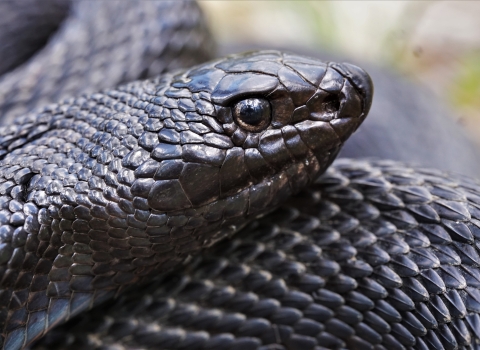DENVER – Thanks to decades of collaborative work by conservation partners to support the razorback sucker throughout its range, this native fish is swimming towards recovery. The U.S. Fish and Wildlife Service is proposing to reclassify the species from endangered to threatened. The proposed rule to reclassify this unique fish will publish in the Federal Register on July 7, 2021, opening a 60-day public comment period.
“The conservation gains for the Colorado River’s razorback sucker is another example of how we can work together towards recovering listed species and the habitats they depend upon,” said Noreen Walsh, Service Upper Colorado River Basin Regional Director. “Advancements for the razorback sucker and humpback chub represent our tremendous progress in improving the health of this vital river through strong, mutually beneficial partnerships.”
The razorback sucker, a freshwater fish native to the Colorado River Basin, initially received protections as endangered under the Endangered Species Act in 1991 following an upstream battle to access its habitat. Gravelly river margins, sheltered backwaters, floodplains, and pools of deep, slow-moving warm water are some of the aquatic sweet spots that the razorback sucker needs to complete its complex life cycle.
Historically, the construction of dams throughout the Colorado River Basin altered the river’s flow patterns, creating barriers between the fish and its habitat. These literal barriers reduced the species’ range to 25% of what it once was, and resulted in population declines. The introduction of nonnative sport fish that preyed upon juvenile razorback suckers took an added toll.
Over the last 30 years, coordinated conservation actions such as predator control, hatchery production, and habitat restoration have improved conditions in areas of the Colorado River Basin that historically supported populations of razorback sucker. The Bureau of Reclamation specifically times spring water releases from Flaming Gorge Reservoir, which allows newly hatched razorback sucker larvae to move from the cold, murky Green River to warm, food-rich floodplain habitats. Colorado, Utah, and Wyoming state agencies are working with the Service to control the most predacious nonnative fish, including northern pike, walleye, and smallmouth bass. Thanks to these collaborative management actions, razorback suckers are now found in eight populations, and four of these can migrate and spawn in multiple locations. The largest population of razorback sucker, found in the Green River of the Upper Basin, now comprises nearly 36,000 adults.
While conditions have been improving for the razorback sucker, challenges remain for it to achieve full recovery. Survival to adulthood is rare in all but one population, and the species currently depends upon management actions to persist. However, the species is no longer considered at risk of extinction in the short term, and the Service and its partners, are committed to continuing work together to ensure its persistence into the future.
The razorback sucker is one of 14 native fish species – including the humpback chub, Colorado pikeminnow, and bonytail chub – that benefit from long-standing cooperative partnerships with local, state, and federal agencies, water and power organizations, and non-governmental organizations in the Upper Colorado River. Partners in the Upper Colorado River Endangered Fish Recovery Program, the San Juan River Basin Recovery Implementation Program, and the Lower Colorado River Multi-Species Conservation Program have been working to recover native fish in Colorado, Utah, New Mexico, Wyoming, Nevada, Arizona, and California through stakeholder-driven approaches. By implementing conservation measures that complement local communities' water needs, these partnerships aim to benefit habitat for a range of aquatic species while supporting economic growth. Along with the proposed downlisting of humpback chub, the proposal to reclassify the razorback sucker demonstrates the continued success and progress of these collaborative, partnership-informed approaches to conservation to benefit people and native wildlife.
In conjunction with this proposed change in status, the Service proposes to utilize provisions under section 4(d) of the Endangered Species Act to reduce unnecessary regulation. A 4(d) rule allows the Service to tailor the protections most needed for the conservation of threatened species while reducing regulatory burdens. The 4(d) rule would reduce the regulatory requirements for state wildlife agencies and other non-federal stakeholders to create refuge populations, expand the range of the species, remove nonnative fishes, and create catch-and-release fishing opportunities.
The Service will accept public comments on the proposed reclassification from endangered to threatened for 60 days, from July 7, 2021 through September 6, 2021. This document is available for for review and public comment in the Federal Register.
The mission of the U.S. Fish and Wildlife Service is working with others to conserve, protect, and enhance fish, wildlife, plants, and their habitats for the continuing benefit of the American people. For more information on our work and the people who make it happen in the West, visit our website, or connect with us through any of these social media channels: Facebook, Twitter, Flickr, YouTube, and Instagram.



